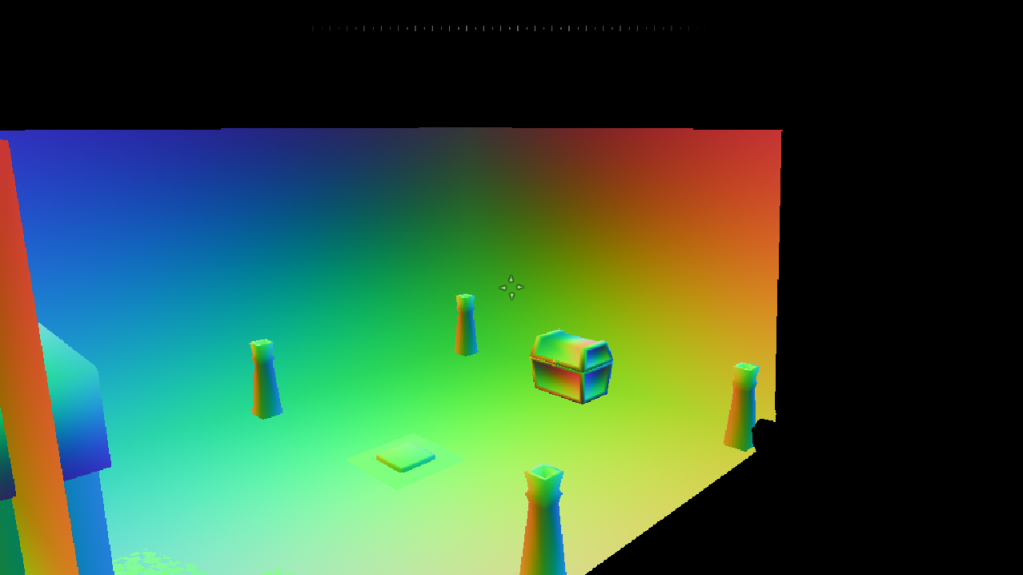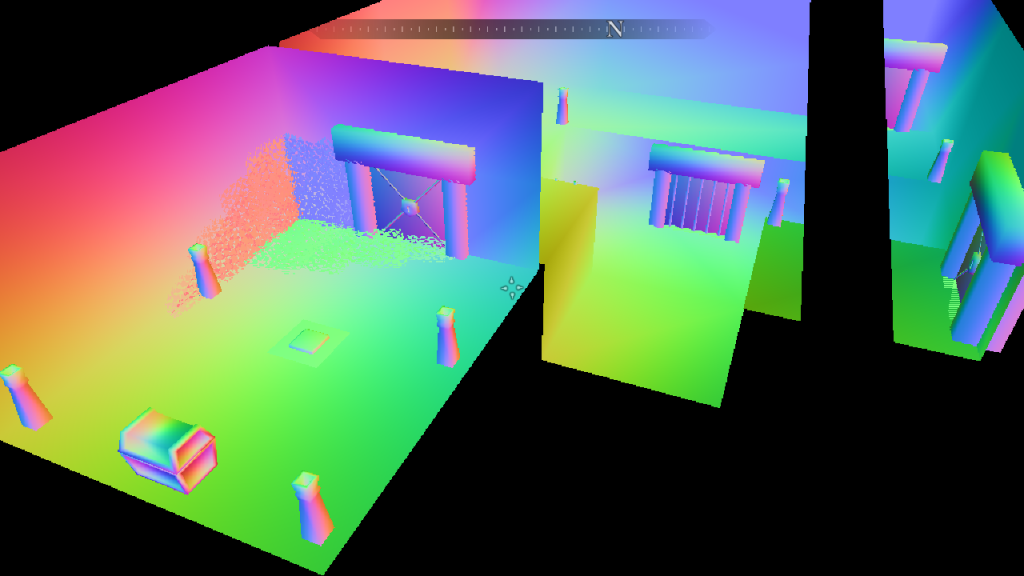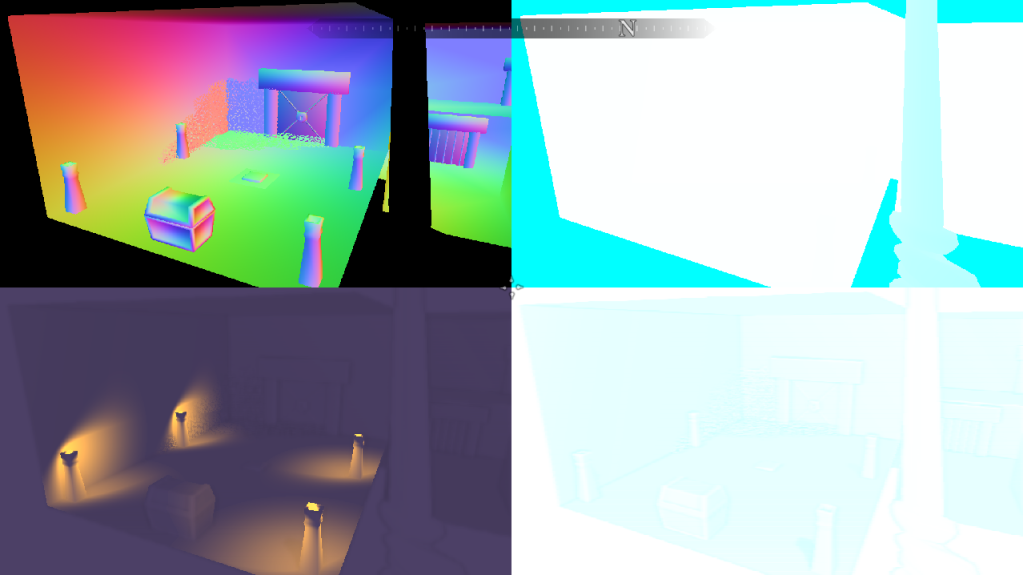Previously I had been using 3 render-targets for my light pre-pass implementation and 1 more render-target for shadows.
My G-Buffer / Render-targets = ~7.5 MB
- Depth-map: R32 1024 x 576
- Light-map: ARGB32 1024 x 576
- Output : ARGB32 1024 x 576
- Shadows: R16 512 x 512
What I was doing looked something like this:
- Draw scene depth to the depth-map
- Draw the shadow buffer to its render target
- Draw/Calculate AO and shadows using ONLY the depth-map, to the Light-map
- Blur the light-map using the output render-target as a temporary buffer
- Draw scene lighting using depth
- Draw the scene to the Output buffer using the light-map
- Ping-pong between the light-map and output for post-process effects
Now this looked FINE, but I wasn't satisfied. I had completely ignored normals and as a result was stuck with only simple point-lights.
So I got to thinking about how I could squeeze in a normal-buffer. The most obvious idea of just making a new render-target would leave me squeezed at ~9.5 MB, which is NOT OK!
So after much pondering I finally came up with a way to do it in the render-targets I already had!
I can use the SAME G-BUFFER!
What I'm doing now, and what I'm stuck on:
- Draw scene depth to the depth-map and scene Normals to the output render-target
- Draw the shadow buffer to its render target
- Draw/Calculate AO and shadows using ONLY the depth-map, to the Light-map
- Blur the light-map using the Shadow render-target as a temporary buffer (Both AO and Shadows are only a representation of lightness / darkness and can easily be represented as just 1 byte / pixel)
- Draw scene lighting using depth and Normals!
- Draw the scene to the Output buffer using the light-map
- Ping-pong between the light-map and output for post-process effects
Now theoretically this should work, and it does... sort of.
I can go all the way through the render-cycle, and when I go to draw lights at step 5, I have both a depth and a normal buffer!
Unfortunately, when I try to draw lights taking into account the normal-buffer, the lights are calculated incorrectly.
Now after much pondering, searching and tweaking, I have still yet to get over this little obstacle.
I previously had only been using point-lights, just calculating the attenuation with a depth-calculated world position, and that worked fine,
and if I remember correctly, to take normals into account for an omni-directional light I just have to multiply my current output by the dot product of the lightVector and the surface normal, right?
So here's the pixel shader for the point light:
[source lang="cpp"]float4 PixelShaderFunction(VertexShaderOutput input) : COLOR0
{
float2 screenSpace = GetScreenCoord(input.ScreenSpace);
float lightDepth = input.Depth.x / input.Depth.y;
float sceneDepth = tex2D(Depth, screenSpace).r;
clip(sceneDepth > lightDepth || sceneDepth == 0 ? -1:1);
float4 position;
position.x = screenSpace.x * 2 - 1;
position.y = (1 - screenSpace.y) * 2 - 1;
position.z = sceneDepth;
position.w = 1.0f;
position = mul(position, iViewProjection);
position.xyz /= position.w;
// Surface World Position is calculated correctly
// Light position is in world space
float Distance = distance(LightPosition, position);
clip( Distance > LightRadius ? -1:1);
float3 normal = (2.0f * tex2D(Normal, screenSpace).xyz) - 1.0f;
float3 lightVector = normalize(LightPosition - position);
float lighting = saturate(dot(normal, lightVector));
return lighting * (1.1f - Distance / LightRadius) * LightColor;
}[/source]
Here is the little bit of shader code that generates the Depth and Normal buffers:
[source lang="cpp"]PreVertexShaderOutput PreVertexShaderFunction(PreVertexShaderInput input)
{
PreVertexShaderOutput output;
float4 worldPosition = mul(input.Position, World);
float4 viewPosition = mul(worldPosition, View);
output.Position = mul(viewPosition, Projection);
output.Depth.xy = output.Position.zw;
output.Normal = mul(input.Normal, World);
return output;
}
PrePixelOutput PrePixelShaderFunction(PreVertexShaderOutput input)
{
PrePixelOutput output;
output.Normal.xyz = (normalize(input.Normal).xyz * 0.5f) + 0.5f;
output.Normal.a = 1;
output.Depth = input.Depth.x / input.Depth.y;
return output;
}[/source]
Now, a couple of pictures would be nice to illustrate what I'm seeing.
- I overrode the final scene drawing to get the normal buffer to show up for this pic, so I am getting some sort of normal value,
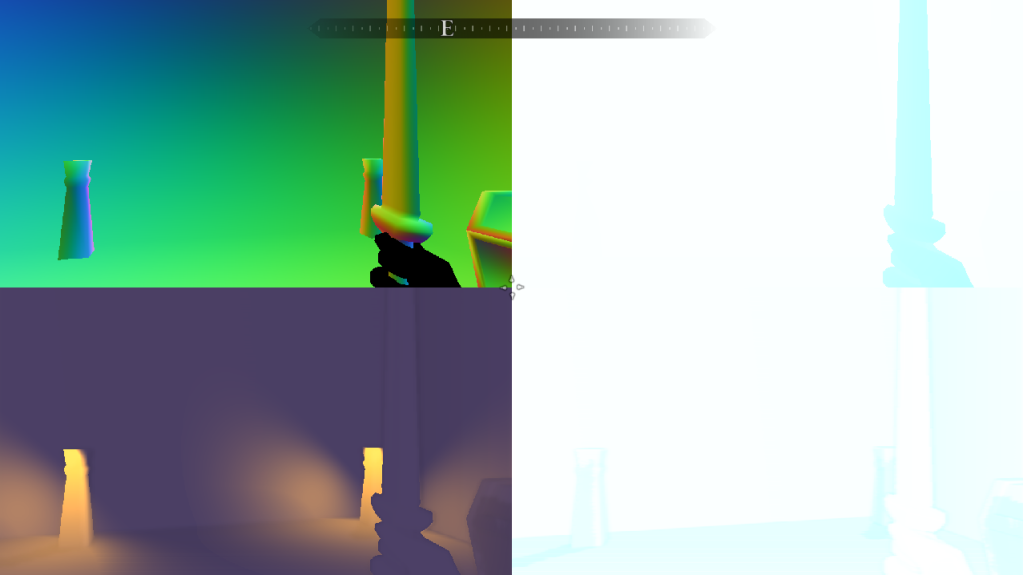
- And here's what it looks like with the incorrect lighting, the lights are all squeezed and distorted.
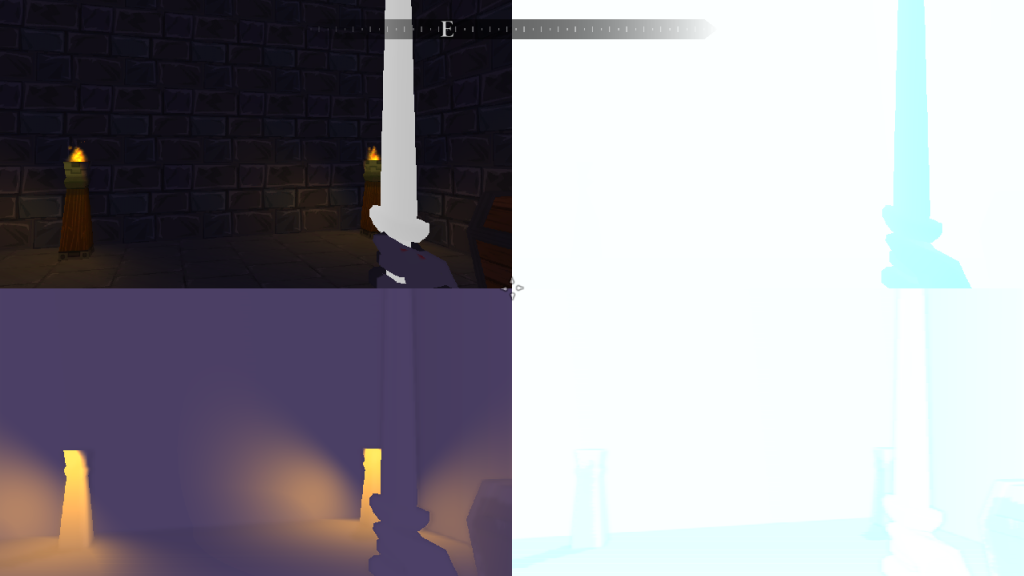
- Here's what it should/used to look like in the light-buffer
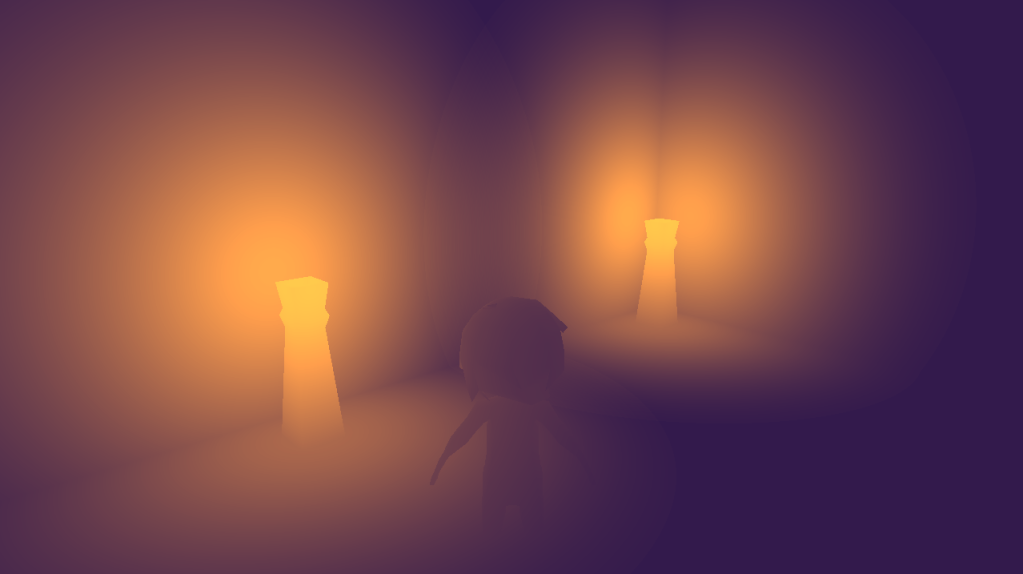
So even after typing ALL this up, I still haven't been able to figure this out...
Is it the normals? is it the light? I don't know...
Any help would be greatly appreciated
-Thanks in advance


